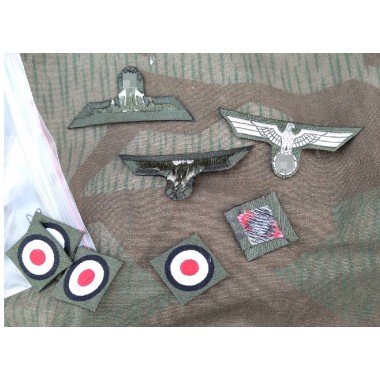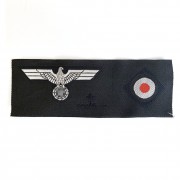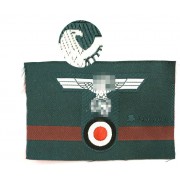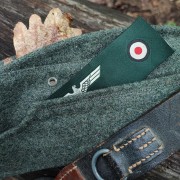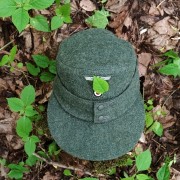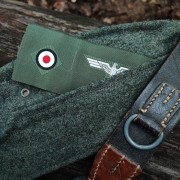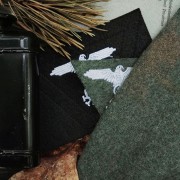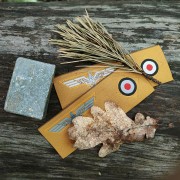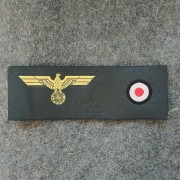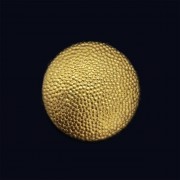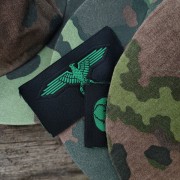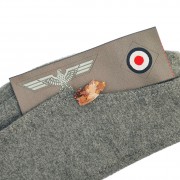Description
This product is intended for military-historical reenactment (immersive stydy of history); for creating costumes for theatrical and film, video plays condemning Nazism and fascism; as well as for exhibiting in museums of military history. This product is not propaganda of ideas and criminals convicted by an International Military Tribunal, and should not be used for such a purpose! The photos have been edited in accordance with the requirements of the law.
If you need additional photos of the product, write to us by email or in the messenger.
The price is for 1 set (for 1 headdress). These insignias are made specially for our store, they bear the "Replika" logo. They have an accurate geometry and neatly executed details. The insignia set for the side-cap consists of two parts: an eagle and a cockade. Woven with light gray threads on a dull green background. Such examples began to be used officially since 1940, but they did not become widespread until 1942.
BeVo insignias are made in the form of a ribbon. Before sewing them, they are usually folded in a special way. It is difficult for an untrained person to achieve a neat result. We have folded the patch for you, you just need to sew it correctly.
How to sew a patch?
The patch is already folded and ready for sewing. Most of the work that requires special care is done.
Fasten the patch on the clothes with a few stitches of a bright-colored thread so that it sits straight. Then sew the patch along the contour with small stitches (a covering seam, around the edge) with threads in the color of the patch. The smaller the stitch, the less visible it is, the neater the result will be. The distance between the stitches is about 5 mm. It may be necessary to rip off the lining of the cap and then return it to its place, so as not to sew the patch through, but to hide the seams under the lining.
At the end, you need to remove the bright threads with which the patch was fixed.
Historical reference.
Officially, such prisoners were called "functional prisoners" (German: Funktionshäftling), but in the camp system they were called "kapo". The origin of the word has a number of versions: Italian capo (head), French caporal (corporal), etc.
This system, called "prisoner self-management" (Häftlings-Selbstverwaltung), allowed the camps to operate with fewer SS personnel. The system was designed to pit victim against victim, meaning that capo prisoners had to suppress their fellow prisoners in order to maintain the favor of the SS guards.
Capo prisoners could make a career in the camp and rise to the rank of camp leader (German: Lagerältester), but they could just as easily fall out of favor and be destroyed. After the war, a number of "kapo's" were convicted and executed in different countries.










